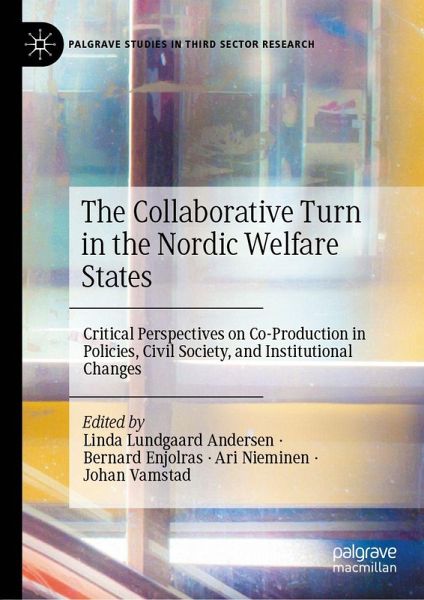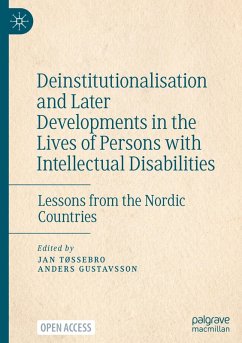
The Collaborative Turn in the Nordic Welfare States
Critical Perspectives on Coproduction in Policies, Civil Society, and Institutional Changes
Herausgegeben: Lundgaard Andersen, Linda; Enjolras, Bernard; Nieminen, Ari; Vamstad, Johan
Versandkostenfrei!
Versandfertig in 6-10 Tagen
121,99 €
inkl. MwSt.

PAYBACK Punkte
61 °P sammeln!
This book offers a critical examination of the collaborative turn unfolding across the Nordic welfare states. Focusing on co-production partnerships between citizens, public authorities, and civil society the volume explores how this approach is reshaping policies, institutional arrangements, and the role of civil society in Sweden, Norway, Finland, and Denmark.While co-production is increasingly promoted as a solution to persistent challenges such as policy complexity, democratic deficits, and fiscal pressures the Nordic experience reveals important variations in its scope, forms, and implica...
This book offers a critical examination of the collaborative turn unfolding across the Nordic welfare states. Focusing on co-production partnerships between citizens, public authorities, and civil society the volume explores how this approach is reshaping policies, institutional arrangements, and the role of civil society in Sweden, Norway, Finland, and Denmark.
While co-production is increasingly promoted as a solution to persistent challenges such as policy complexity, democratic deficits, and fiscal pressures the Nordic experience reveals important variations in its scope, forms, and implications. Is this shift a genuine transformation of the welfare state, or an adaptive strategy cloaked in collaborative rhetoric? Drawing on comparative perspectives, the book highlights how Nordic traditions of universalism, egalitarianism, and strong public institutions create distinct conditions for collaboration conditions that differ markedly from those in liberal or residual welfare regimes where co-production theories have largely been developed. In doing so, it challenges dominant frameworks and argues for a reconceptualization of co-production through a Nordic perspective.
Aimed at scholars, policymakers, and practitioners, this volume offers a significant contribution to welfare state and civil society research and invites reflection on the promises and limits of collaborative governance in times of change.
While co-production is increasingly promoted as a solution to persistent challenges such as policy complexity, democratic deficits, and fiscal pressures the Nordic experience reveals important variations in its scope, forms, and implications. Is this shift a genuine transformation of the welfare state, or an adaptive strategy cloaked in collaborative rhetoric? Drawing on comparative perspectives, the book highlights how Nordic traditions of universalism, egalitarianism, and strong public institutions create distinct conditions for collaboration conditions that differ markedly from those in liberal or residual welfare regimes where co-production theories have largely been developed. In doing so, it challenges dominant frameworks and argues for a reconceptualization of co-production through a Nordic perspective.
Aimed at scholars, policymakers, and practitioners, this volume offers a significant contribution to welfare state and civil society research and invites reflection on the promises and limits of collaborative governance in times of change.












